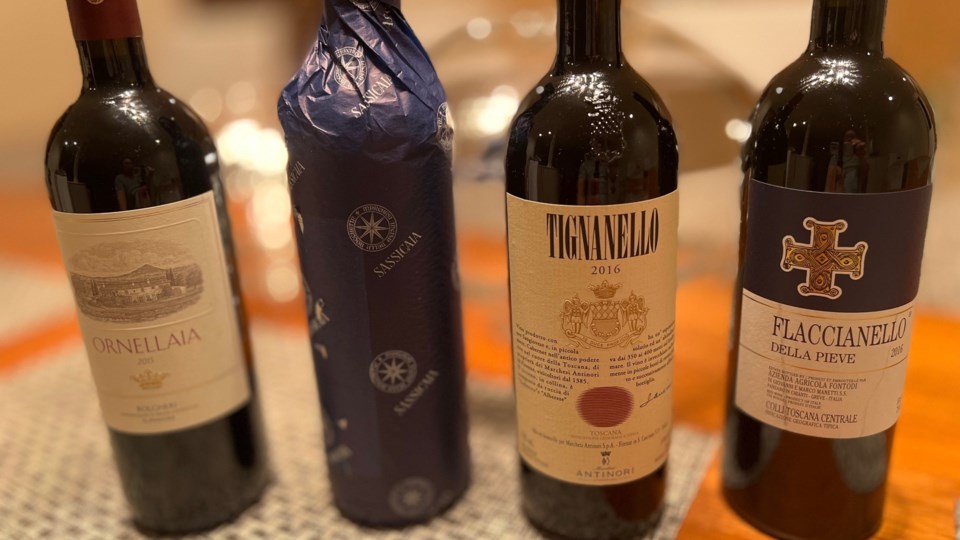What is a Super Tuscan wine? The term “Super Tuscan” was coined by some Italian and American wine writers in the late 1970s to describe wines produced in the Tuscany region which did not follow the usual rules regarding Tuscan wines in the late 1970s. At that time, Chianti was the predominant and most famous type of wine produced in Tuscany. But according to the wine laws at that time, in order for a wine to call itself a “Chianti”, the grapes used to produce the wine had to consist of no more 70-per-cent Sangiovese grapes and had to contain no less than 10% of grapes normally used to produce white wines.
Many leading winemakers, including like Marchese Mario Incisa della Rocchetta, Piero Antinori and Marchese Lodovico Antinori, thought that these restrictive rules hurt the quality of the wines. So they started experimenting by producing wines with more than 70-per-cent Sangiovese grapes, or wines with no white wine grape varietals, or including wine varietals not normally used in Tuscany, like Cabernet Sauvignon and Merlot.
Because they did not follow the wine rules at that time, they could not label their wines Chianti, and had to use the lowest designation for Italian wines, which was Vins de Tavolo or table wines. In order to distinguish themselves from the Chianti counterparts, they made up their own unique names: Marchese named his wine Sassicaia, Piero named his wine Tignanello, and Lodovico named his wine Ornellaia. Today, these are some of the most famous and expensive Italian wines.
Slowly, the wine laws changed to recognize the foresight of these pioneers. In 1992, a new category of wines was created, called Tuscan IGT (or Indicazione Geografica Tipica). The laws surrounding the Chianti region also changed to allow for more Sangiovese to be in the blend and to eliminate the requirement that 10% of the grapes contained in Chianti had to be white wine varietals. But this did not stop the popularity and proliferation of these Super Tuscans, which are now recognized as distinct from Chianti wines.
Wine lovers are attracted to Super Tuscans because they have some of the characteristics of Italian wines, like nice acidity and earthy aromas and flavors, but they also have characteristics of Bordeaux wines, which are mainly produced with Cabernet Sauvignon and Merlot grapes. It is like taking the best that the Sangiovese grape and the Tuscan terroir has to offer and mixing it with what wine lovers love about Bordeaux wines. What is created is a delicious, bold, dense wine with great acidity and which drinks earlier than many expensive Bordeaux wines, which frequently require more aging than Super Tuscans.
So what does a Super Tuscan taste like? It is hard to generalize, but if you ever get a chance to taste a Super Tuscan like Ornellaia, Tignanello or Sassicaia, don’t pass up the opportunity. They are very aromatic wines with lots of dark fruit flavor and earthy aromas and tastes. They pair very well with food and are ageable. They have good acidity, but not the pronounced cherry or red fruit acidity associated with Chiantis. They also don’t have the alcoholic punch of Chiantis and will seem more refined and smoother.
While Super Tuscans will taste very nice even in their youth, most need five to eight years of aging to hit their peak. But their popularity is largely due to how consumer friendly the wines taste. They are exceptionally easy to drink for beginners and have the complexity to impress the most discerning wine enthusiasts.
I have had the good fortune of drinking many Super Tuscans so you can see my reviews for Sassicaia, Ornellaia and Tignanello.
Until next time, happy drinking!



